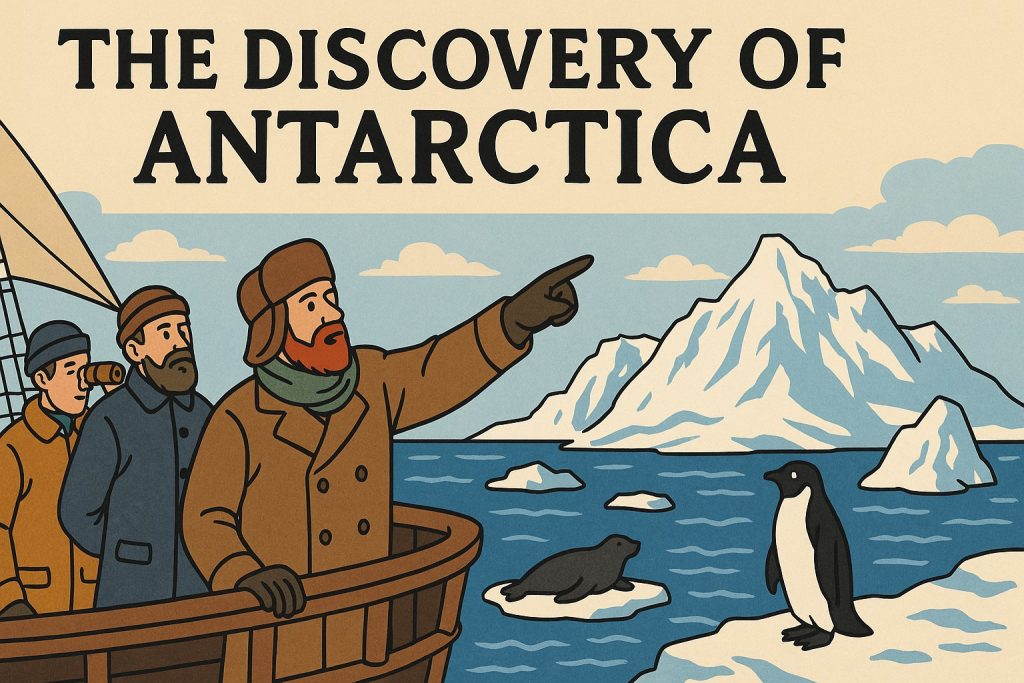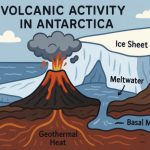Antarctica, the fifth-largest continent and the coldest, windiest place on Earth, was the last major landmass to be discovered by humans. Hidden by ice, surrounded by stormy seas, and absent from ancient maps, Antarctica remained a mystery for centuries. Its eventual discovery was a product of scientific curiosity, nautical exploration, and the pursuit of new trade routes.
Ancient Theories and Early Speculation
Long before it was seen, ancient civilizations believed in the existence of a vast southern land. This idea, known as Terra Australis Incognita (“Unknown Southern Land”), appeared in Greek and Roman geography and was based more on philosophical symmetry than actual evidence.
During the Age of Exploration (15th–17th centuries), navigators like Ferdinand Magellan and James Cook searched for southern continents, but found only islands or distant ice. In 1773, Cook crossed the Antarctic Circle and circumnavigated the area but never saw the mainland — stopped by thick ice fields.
First Sightings of the Antarctic Continent
The first confirmed sightings of Antarctica occurred in the early 19th century during a surge in global exploration:
- 1820: Multiple expeditions sighted the Antarctic mainland nearly simultaneously:
- Fabian Gottlieb von Bellingshausen (Russia) is often credited as the first to see the continent (January 27, 1820).
- Edward Bransfield (UK) sighted part of the Antarctic Peninsula days later.
- Nathaniel Palmer (USA), a sealer, also saw the coast in November 1820.
These initial encounters were brief and limited to distant views of ice-covered coastlines.
First Landfall and Mapping
Although Antarctica was seen in 1820, it took years for explorers to land on the continent:
- In 1895, Carsten Borchgrevink, a Norwegian explorer, was likely the first to set foot on the mainland.
- Early expeditions were mainly led by sealers and whalers, followed by scientific missions from Britain, France, and Germany.
The “Heroic Age of Antarctic Exploration” (1897–1922) brought dramatic progress:
- Ernest Shackleton, Robert Falcon Scott, and Roald Amundsen led expeditions that explored the interior and sought the South Pole.
- In 1911, Amundsen became the first to reach the geographic South Pole.
Legacy and Modern Exploration
Today, Antarctica is protected by the Antarctic Treaty (1959), which ensures that the continent is used for peaceful, scientific purposes only. It hosts dozens of international research stations, studying climate change, astronomy, glaciology, and biodiversity.
From a mythic southern land to a cornerstone of climate science, the discovery of Antarctica reshaped humanity’s understanding of Earth.
Glossary
- Terra Australis Incognita: Latin for “Unknown Southern Land,” a mythical continent imagined in ancient times.
- Antarctic Circle: The latitude (around 66.5°S) marking the northern boundary of the Antarctic region.
- Heroic Age: A period of intense exploration of Antarctica from the late 1800s to early 1900s.
- Geographic South Pole: The southernmost point on Earth, located on the Antarctic Plateau.
- Antarctic Treaty: An international agreement preserving Antarctica for science and peace.


